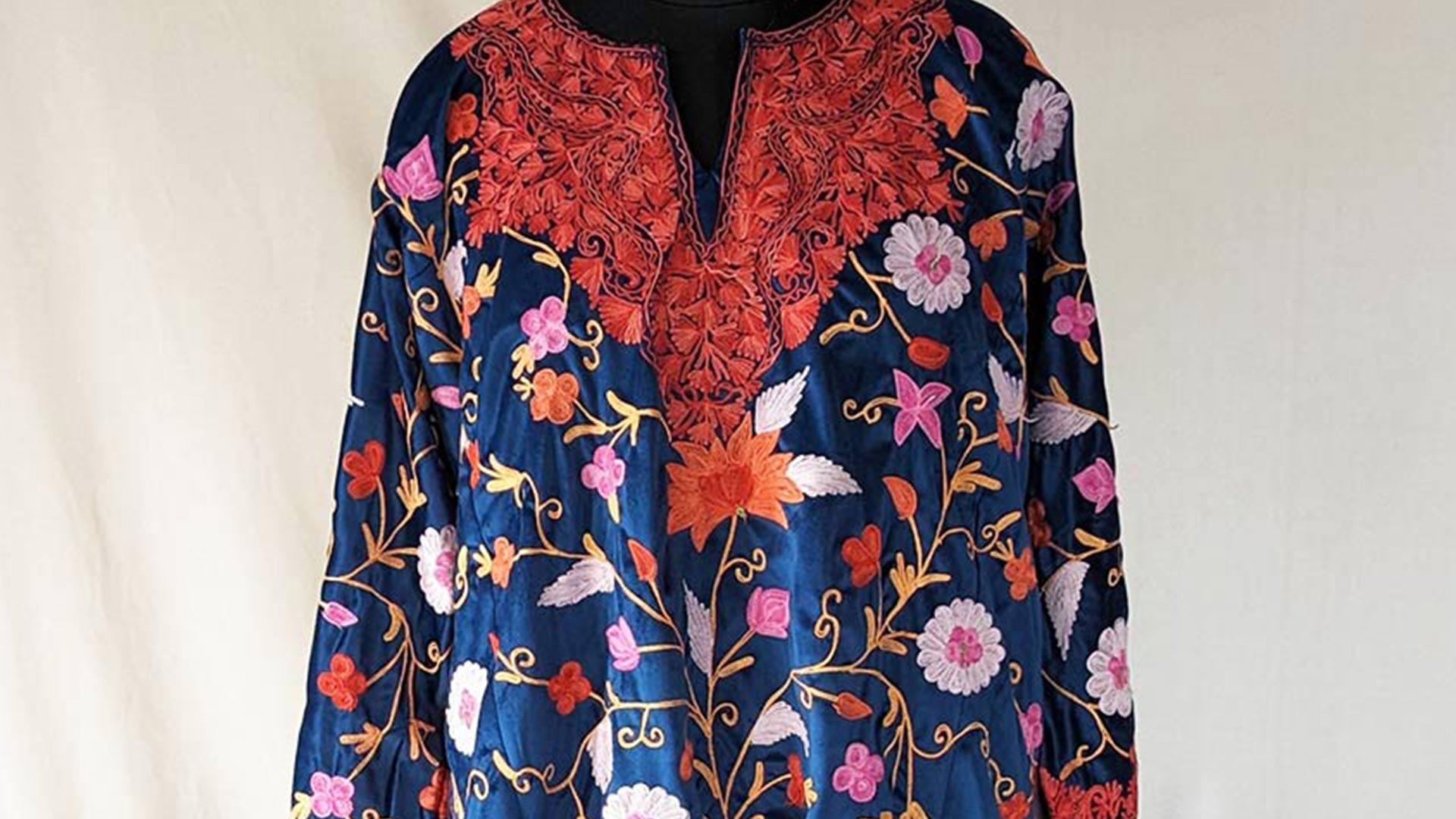Editorial
Phiran: Traditional outfit for both males and females in Kashmir

Kashmiri phiran, also known as pheran, is an emblematic garment that embodies the cultural richness and heritage of the Kashmir Valley. Worn by both men and women, this traditional attire has evolved over centuries, adapting to the region’s climatic demands and socio-cultural changes.
Historical Context
The origins of the phiran can be traced back to before the 15th century, with influences from Persian and Central Asian clothing styles. The term “phiran” is believed to be derived from the Persian word “perahan,” meaning cloak or shirt. Historical accounts suggest that the garment gained prominence during the Mughal era, particularly under Emperor Akbar’s reign after he conquered Kashmir in 1586. Over time, it became a staple in Kashmiri wardrobes, symbolizing both modesty and cultural identity.
Design and Material
Traditionally, the phiran is characterized by its loose-fitting design, which allows for layering and comfort. It typically extends to the ankles, although modern variations may fall just below the knees. The garment is primarily made from wool in winter to provide warmth against the biting cold, especially during the harsh winter months known as Chilai Kalan, which starts on December 21. In summer, lighter cotton versions are worn.
Features of Phiran
- Material: Wool for winter; cotton for summer.
- Fit: Loose and roomy, allowing ease of movement.
- Length: Varies from ankle-length to knee-length.
- Sleeves: Wide sleeves that add to comfort.
- Embroidery: Often adorned with intricate designs, particularly on women’s phirans; embroidery styles include ‘Tille,’ which uses thin metal threads.
The craftsmanship involved in creating a phiran is remarkable. Kashmiri artisans often incorporate floral patterns and geometric designs into their embroidery, reflecting the natural beauty of the region. This artistry not only enhances the aesthetic appeal of the garment but also showcases the skilled handiwork that has been passed down through generations.
Cultural Significance
The phiran is more than just clothing; it is a significant part of Kashmiri identity. It represents a connection to tradition and a sense of belonging within the community. For many Kashmiris, wearing a phiran is a way to honor their heritage and express their cultural pride.
Pheran Day
Recognizing its importance, December 21 has been designated as Pheran Day in Kashmir. This day celebrates the cultural significance of the phiran and encourages people to wear it proudly as a symbol of their identity during the coldest season of the year.
Modern Adaptations
In recent years, there has been a resurgence in the popularity of phirans among younger generations. While traditional styles remain cherished, modern interpretations have emerged, blending contemporary fashion with classic elements.
Contemporary Styles
- Raglan Pherans: A hybrid design that combines elements of Western raglan coats with traditional phirans.
- Casual Wear: Many young people are now pairing phirans with jeans or other modern outfits for a stylish yet comfortable look.
- Seasonal Variations: Lighter fabrics are being used for year-round wear, making them suitable for various occasions beyond winter.
Despite these changes, the essence of the phiran remains intact; it continues to symbolize warmth, comfort, and cultural pride.
Practical Use
The practical benefits of wearing a phiran cannot be overstated. Its loose fit allows individuals to layer additional clothing underneath, providing extra insulation against cold temperatures. The design helps retain body heat while offering ease of movement—ideal for daily activities in snowy conditions.
Family Traditions
In many Kashmiri households, wearing matching phirans during family gatherings or celebrations fosters a sense of unity and belonging. Families often huddle together for warmth during winter evenings while sharing stories or enjoying traditional meals.
Conclusion
The Kashmiri phiran stands as a testament to the region’s rich cultural tapestry. It encapsulates centuries of history while adapting to modern trends without losing its core identity. As Kashmiris continue to navigate changing fashion landscapes and socio-political challenges, the phiran remains a cherished symbol of resilience and cultural pride.In summary, whether worn during traditional festivities or as part of everyday life, the phiran represents more than just clothing—it embodies a way of life deeply rooted in Kashmiri culture. Its enduring legacy speaks volumes about the values and traditions that have shaped this beautiful region over time.
